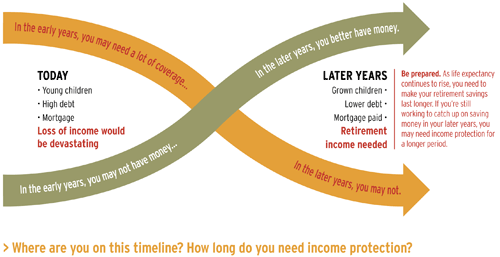Who Needs Term Life Insurance? Probably You.
Life insurance can be confusing. Most people know they need it but procrastinate because they don’t know what kind they need or how much. Primerica was founded on the conviction that term life insurance is the best type of coverage for the vast majority of people.
Back in 1977, Primerica revolutionized the life insurance industry by showing families how they could get the coverage they needed at a price they could afford with term life insurance.
What Do the Experts Say?
Personal finance gurus and consumer advocates are almost universal in their praise for term life insurance.
“Buy enough term coverage to fill your needs. Life insurance is no place to skimp, especially with rates at historic lows.”
CNNmoney.com, Viewed July 21, 2011“Term insurance is pure protection, like fire insurance or auto insurance. Its sole function is to support your family if you die. You can buy large amounts of coverage for modest amounts of money – and big policies are what your spouse and children need. Most breadwinners are seriously underinsured, partly because they’re wasting their limited budget on cash-value coverage. Only with term will you be able to protect your family well.”
Making the Most of Your Money Now, Jane Bryant Quinn, 2009“For most families, term life insurance is the simplest and cheapest way to go.”
Insurancenewsnet.com, December 3, 2010“For most people, term life still offers the best combination of coverage and cost.”
WSJ.com, May 28, 2011
Term Costs Less than Cash Value Insurance
Term insurance is the most affordable type of life insurance for healthy young and middle-aged people. Most families can afford the generally recommended seven to 10 times annual income of coverage. (CNNMoney.com, July 29, 2010)
Term Separates Your Insurance from Your Savings
At Primerica, we believe in the “Buy Term and Invest the Difference.” This simply means that you protect your loved ones’ financial welfare with our affordable term coverage and regularly invest the savings.
BTID especially works well when investing for the long term, such as for retirement or education. The average annual rate of return of the stock market over the 30 years from December 31, 1980 to December 31, 2010 was 10.71%. (Morningstar)[1]
Term and the Theory of Decreasing Responsibility
Long term investing, such as with BTID, goes hand in hand with the Theory of Decreasing Responsibility. Basically, the Theory states that most people’s greatest need for insurance coincides with early adulthood and early middle age when many are supporting young families.
When you are younger, you may have young children to support, a new mortgage payment and many other obligations. And you have all this at a time when you haven’t had the time to accumulate much money. The death of a breadwinner would be financially devastating for your family at this time. It is at this time that you need life insurance coverage the most.
When you are older, you usually have fewer dependents and fewer financial responsibilities. Children are grown, the mortgage is paid or much reduced, and many routine payments have disappeared. Moreover, you’ve had years to accumulate wealth through savings and investments.
Primerica Term Life Insurance – the Answer for Main Street Families
The reasons are simple and compelling for families to protect themselves with term life insurance offered through Primerica.
- Term is the simplest, most straightforward type of insurance available
- Term insurance is, by far, the most affordable for families
- Term insurance does not have an investment component built in, so you’re able to manage your long-term investing separately
- [1] Past performance is no guarantee of future results.
The stated average annual return does not reflect the past or future performance of any specific investment. All investments involve risk including loss of principal. The figure assumes investment of dividends and does not reflect any fees, expenses or tax consequences, which would lower results. The Standard & Poor’s 500®, which is an unmanaged group of securities, is considered to be representative of the stock market in general. Because these indices are not managed portfolios, there are no advisory fees or internal management expenses reflected in their performance and investors cannot invest directly in any index.



